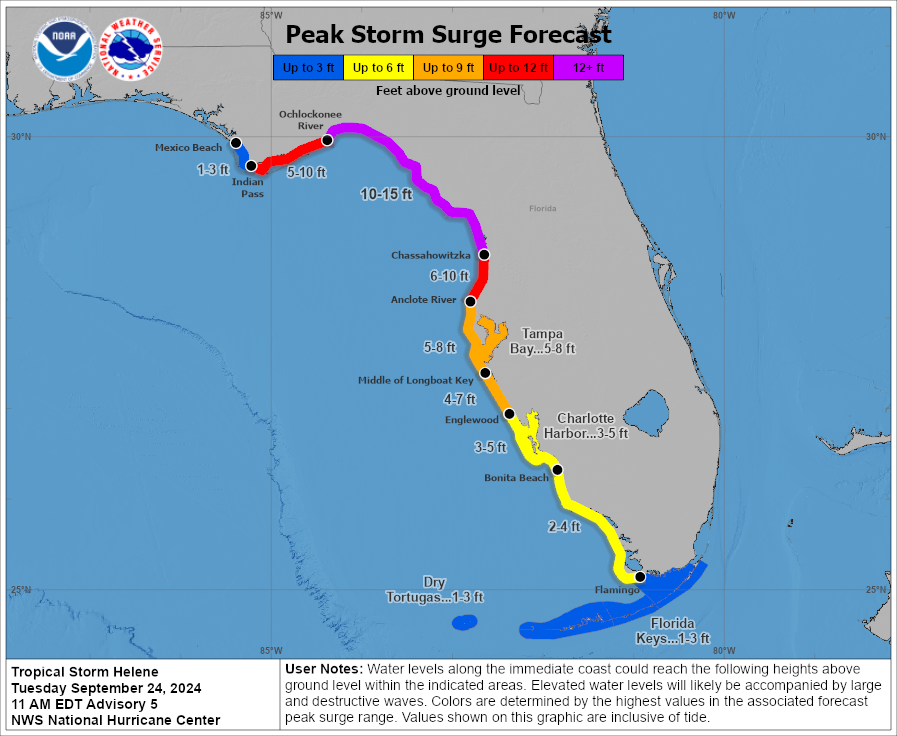Peak surge map of Tropical Storm Helene (graphic from the National Hurricane Center)
Two days before what is now Tropical Storm Helene is due to make landfall in Florida, President Joe Biden has declared an emergency in the state and ordered federal assistance to supplement state, tribal, and local response efforts.
He cited the emergency conditions resulting from the coming storm.
Biden’s action authorizes the Federal Emergency Management Agency (FEMA) to coordinate disaster relief efforts. Federal assistance and reimbursement for mass care including evacuation and shelter support will be provided at 75% federal funding for 41 counties.
The counties would pay the rest.
Earlier Tuesday, Gov. Ron DeSantis declared a revised state of emergency he issued on Monday, expanding it to 61 counties.
At 2 p.m. Eastern time, the National Hurricane Center said that Helene would become a hurricane on Wednesday and a “major hurricane” on Thursday, when it is expected to make landfall.
The NHC says that the combination of a dangerous storm surge and high tide will cause normally dry areas near the northern west coast of Florida to reach as high as 10-15 feet above ground between the Ochlockonee River and Chasshowitzka.
In Tampa Bay, it could rise by between five and eight feet.
John Cangialosi, senior hurricane specialist with the NHC, told The New York Times that Helene’s forecast size compares to 2017’s Hurricane Irma, which hit Florida in 2017 as a Category 4 storm, and Hurricane Katrina, which made landfall in Louisiana at a Category 3 storm.

